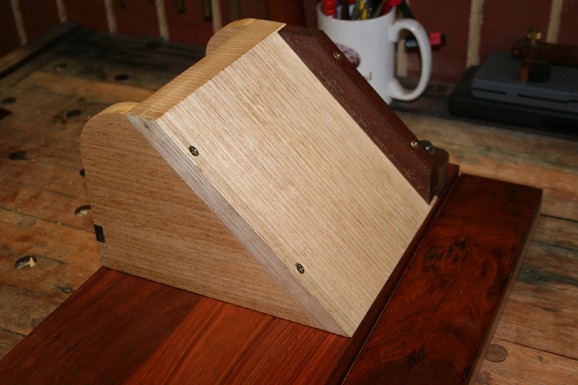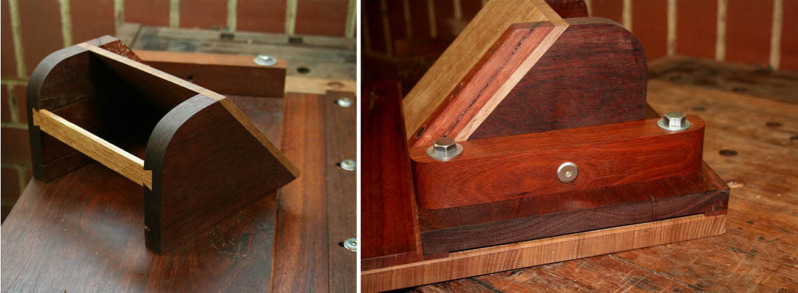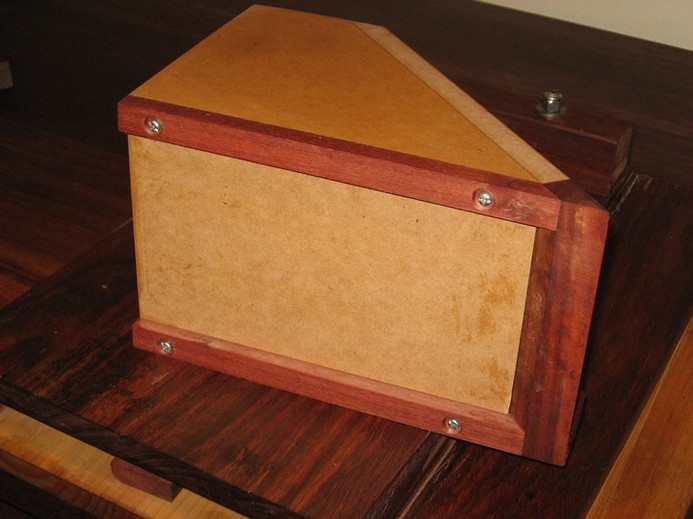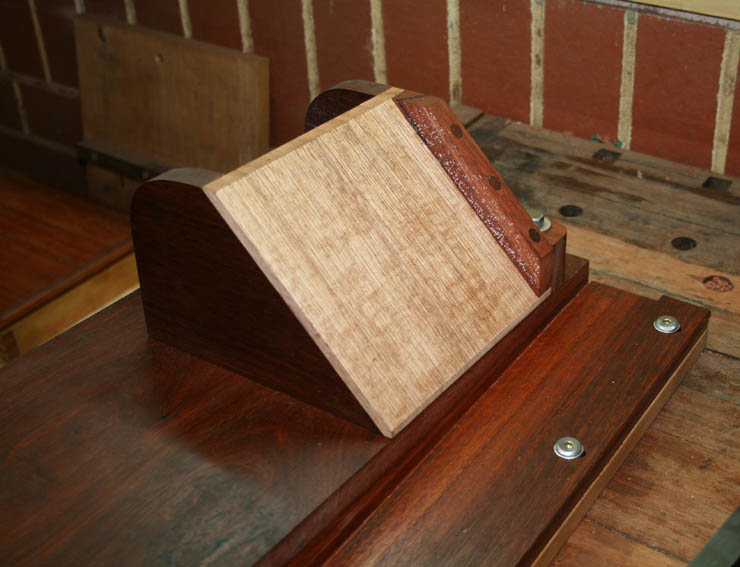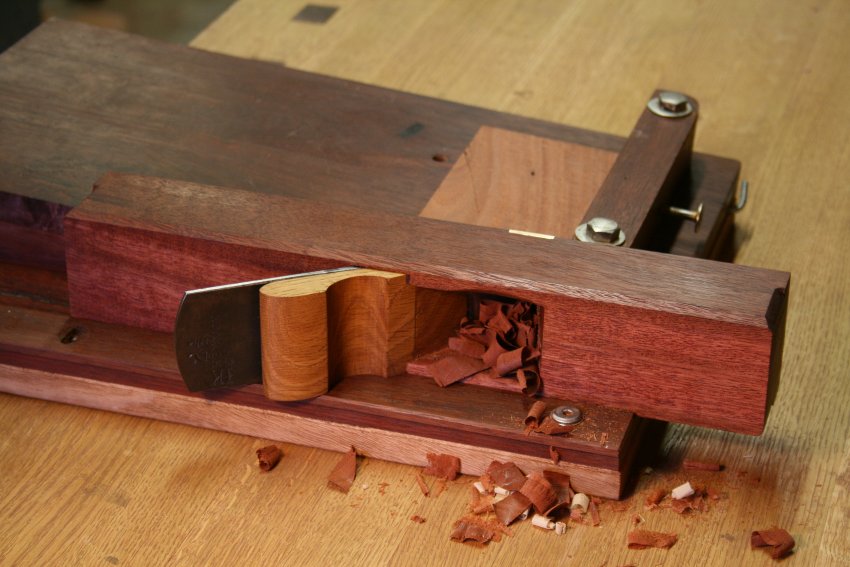Hey all,
I am trying to put together a shooting board (first one), and I have followed Derek Cohen's images and outlines on his website. I am having a difficult time getting the fence on the 90 degree deck to remain square. I have put a bolt through, with an oversized hole to allow for clearance, but I find when I go to tighten it down, it still wants to pull the fence out of square ever so slightly. I have left the blade out the way I normally would have it projecting when in use, as noted in the article by Derek, but I am still finding when I lock it down, it wants to pull out of square. Any idea what I might try to do to hold it in place without movement when I go to lock it down?
My second shooting conundrum comes in the form of long edge case miter work. I have tried to make a doney's ear, with little success, and I am finding it very difficult to fine tune it to get the 45 degree angle to be square in all planes, as well as hold the donkey's ear contraption against my fence. As a result, I am thinking about going to a 45 degree shooting board, where the plane is running against a 45 degree angled runner, and the piece lies flat on the deck of the shooting board, as it would on a 90 degree setup. My concern with that one comes in the form of getting the fence square to the runner, since I am struggling on the 90 degree fence already. I think I would have an easier time setting the long runner up at 45 degrees since I can work to a 45 degree angle along its length with a handplane, and so that would take some of my donkey's ear trouble away I think.
It would be greatly appreciated if someone could give some input on donkey's ear adjustment, and or, some input on the 45 degree runner shooting board alternative; effectiveness and ease of setup.
I have been through the forums and the internet, it hasn't helped much lol
Thanks for your input,
RB




 Reply With Quote
Reply With Quote





